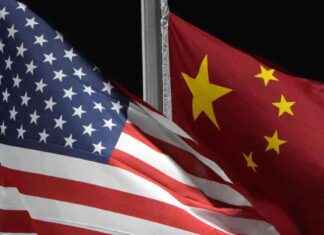Three crew members, two Russians and one American, are being replaced by the cosmonauts. They will be returning home to finish a record-setting flight.
This launch takes place amid tension and strain in the aftermath of Russia’s ongoing invasion Ukraine, its cancellations of cooperative commercial ventures as a result of sanctions, and a stream of sharply critical comments by the Russian space agency director, raising concerns about the station’s fate.
NASA Administrator Bill Nelson stated Friday morning that he is hopeful that the U.S. will continue its decades-long cooperation with Russia in space. This relationship dates back to the Cold War. He said that the agency was working on contingency planning in case of an emergency.
Nelson stated that “We have our problems on Earth with President Putin,” in an interview with CBS News. “We are grateful that we have seen Europe unite and NATO strengthened as never before.
“The amazing thing is that even in 1975, during the Soviet Union’s Cold War, cooperation was possible in civilian space with Russia in the Apollo-Soyuz project. This has been going on for many years. Three cosmonauts are currently launching from Kazakhstan to the International Space Station.
Nelson said, “They will join four Americans and two Russians as well as a German astronaut.” Nelson said, “That’s saying that this cooperation, this professional relation between our astronauts cosmonauts is consistent and will stay.”
Based on the way the station crew treated the arriving cosmonauts with smiles and hugs, it is clear that they agree with Nelson’s sentiments.
Oleg Artemyev (Soyuz MS-21/67S commander), a veteran space explorer, and two newcomers, Denis Matveev & Sergey Korsakov, launched from Baikonur on a Soyuz 2.0a rocket at 11:55 AM EDT (8:55 PM local time). The Soyuz was on its way to a rendezvous with the station in two orbits, eight minutes and 45 seconds later.
Artemyev took over the manual control of final approach. The ship docked at the multi-port Prichal module at 3:12. After extensive leak checks, hatches opened at 5:48 p.m.
They were greeted by Expedition 66 commander Anton Shkaplerov, his Soyuz crewmates Pyotr Dubrov, and Mark Vande Hei. Crew Dragon astronauts Raja Chari and Thomas Marshburn, Kayla Baron, and Matthias Maurer, from Germany.
Space station operations continued without interruption despite severe tensions. NASA television broadcast live coverage of Soyuz launch, with commentary from Johnson Space Center mission control.
Artemyev, his crewmates, and bright yellow jumpsuits with blue trim, landed in Prichal to a warm welcome. There was no sign of tension between Russia, NASA, and the European Space Agency. The 10 astronauts and the cosmonauts were all well-versed in each other’s preflight training and seemed to be happy to see one another.
Artemyev/Matveev/Korsakov will take over the command of Shkaplerov/Dubrov/Vande Hei after a 12-day “handover”. They plan to return to Earth on a different Soyuz, March 30, along with Vande Hei and Shkaplerov. Marshburn will take over the command of the station from Shkaplerov on the day before.
Dubrov and Vande Hei were launched on April 9 aboard a Soyuz and are now wrapping up a 355 day mission. This is the longest single flight by an American Astronaut. Vande Hei broke the previous record of 340 days set by Scott Kelly on March 15.
Oleg Novitskiy was with Vande Hei and Dubrov for launch. He returned to Earth last October aboard the same Soyuz, leaving behind his two crewmates on board the station and bringing home a Russian actress as well as her director.
Vande Hei, Dubrov and Shkaplerov will return to Earth on the Soyuz MS-19/65S Spacecraft on March 30.
Vande Hei stated that he had spoken to Shkaplerov about tensions at the time, but they didn’t get into feelings.
Vande Hei stated that she will always cherish the friendships she has with Anton, Pyotr, and my (Russian) crewmates. “They are amazing human beings. I hope that things go well.”
“I think the success of the space station and our cooperation with Russia on the station is a sign of how successful it can be to get to know one another and find common ground, not points of contention.”
In the aftermath of the invasion, and subsequent U.S.-European sanctions the Russians stopped selling and servicing widely-used rocket engines to U.S. companies and also stopped commercial Soyuz operations at Kourou, French Guiana launch site of the European Space Agency.
Roscosmos, the Russian space agency, also canceled a planned launch for 36 internet satellites on a Soyuz rocket. OneWeb, an international consortium partially funded by the United Kingdom had paid for it.
However, space station operations are not being affected. NASA managers kept their public profile low to avoid any comments that could exacerbate an already difficult relationship.
Russia provides the propellant and thrusters required to keep the station in orbit. NASA supplies electrical power, satellite communications, and the enormous gyroscopes necessary for maintaining the station’s direction.
It would be extremely difficult to keep the station operational if either party pulled out of this project. NASA hopes to keep the laboratory running through 2030. However, it is not clear if Russia will agree.
Nelson believes Putin will not withdraw from the space station project. He says it is in Russia’s best interest to continue.
Nelson stated to CBS News that Nelson was not going to pull out the plug. Nelson said, “But if (what) if they abandon space station?” We would manage it. … We are confident that we can keep it going for the short-term. We would have to do other things and those contingency planning are already in place. We don’t expect that.”
Nelson stated that the cooperative relationship has “survived all these decades since 1975.” It won’t end now.






